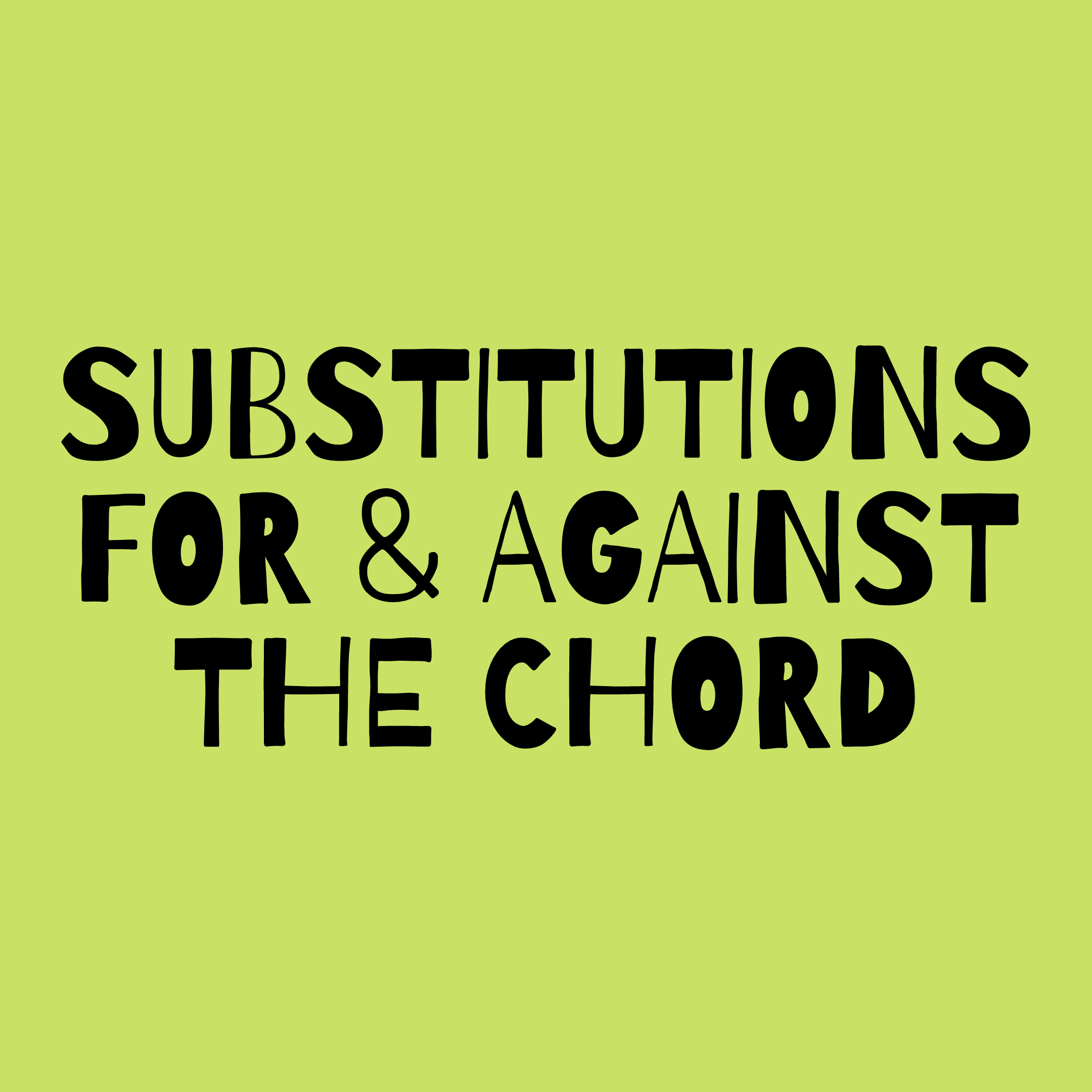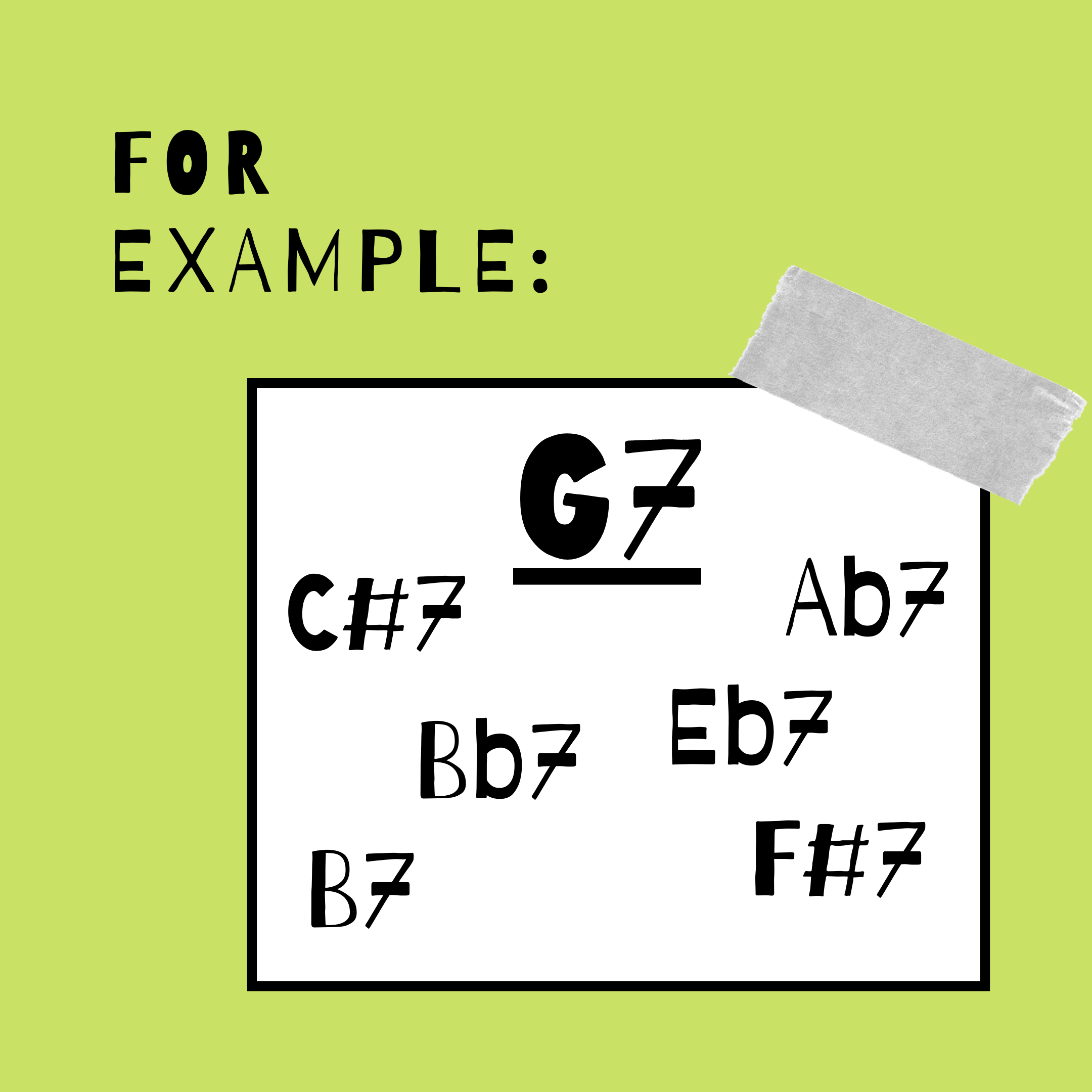Substitutions For & Against The Chord
This post is about chord substitutions and how to use them in your jazz improvisation as a melodic device. To keep it simple, I’ll only be looking at substitutions on dominant 7 chords.
Let’s imagine a scenario where you’re improvising and you come across a II-V-I chord progression in C. That means the chords are D-7, G7, Cmajor7. You play “in” on the D-7, which means using the Dorian mode. Now, on the G7, you want to play “out” (outside the changes/outside the key) to create tension and emotion, what do you play?
Here’s where the chord substitutions come in. The rhythm section will still play the G7, but you are going to play a melody derived from a different chord/key and therefore it will sound very funky and tense because it will hit some tasty and exotic chord tones.
Of course, you’ll want to be comfortable playing over dominant 7 chords diatonically before attempting these substitutions. That might include playing the Mixolydian mode, Dominant Bebop scales, Pentatonics, Jazz lines and so on. And many of these techniques are available to explore, learn and practice in my jazz improvisation books.
So, to utilise chord substitutions, you’ll simply play as if the chord in the progression is a different chord. Let’s take a look at what chords are suitable to use.
The picture above shows all of the chord substitutions that you could play. They are: the tritone, up a minor 3rd, down a major 3rd, up a semitone, down a semitone and up a major 3rd. These intervals describe where you can shift the chord. For example, the Tritone substitution would mean that you substitute the G7 chord with the chord that is a tritone away, in this case it’s C#7. So you’d play any jazz lines, pentatonics and scales that work on a C#7. If you wanted to do it with the substitution of up a minor 3rd, then you’d substitute the G7 with the chord that’s a minor 3rd up from that, which is Bb7.
Some of these are substitutions “for” the changes and some are “against” the changes. The first 3 in the list are “for” the changes. This means they will share some common chord tones and have an altered or diminished sound. They’re funky, but not too crazy. Chord substitutions “against” the chord, these are the last 3 in the list, have as few common chord tones as possible. They are super crunchy! Not for the faint-hearted. But I love ‘em.
I’ll just leave you with two final points. First, these chord substitutions only work when you play something that sounds good on the substituted chord. If you play something that wouldn’t sound that great in its own key, then chances are it’s not going to sound too great when it’s played over a different key. However, if it would work and you play it with confidence and conviction it’ll sound great! This is because melody trumps harmony. Second, try to avoid any chord substitution that isn’t listed. This is because, these ones have a perfect amount of altered tones and dissonance, but other chords will sound too close to the original (yet slightly different/not quite right) this leads to sounding like you’re playing the wrong chords or notes - but not on purpose!
So there you go, I hope you’ve enjoyed this post and you’ve learned something from it. Now it’s time to put it into practice!


